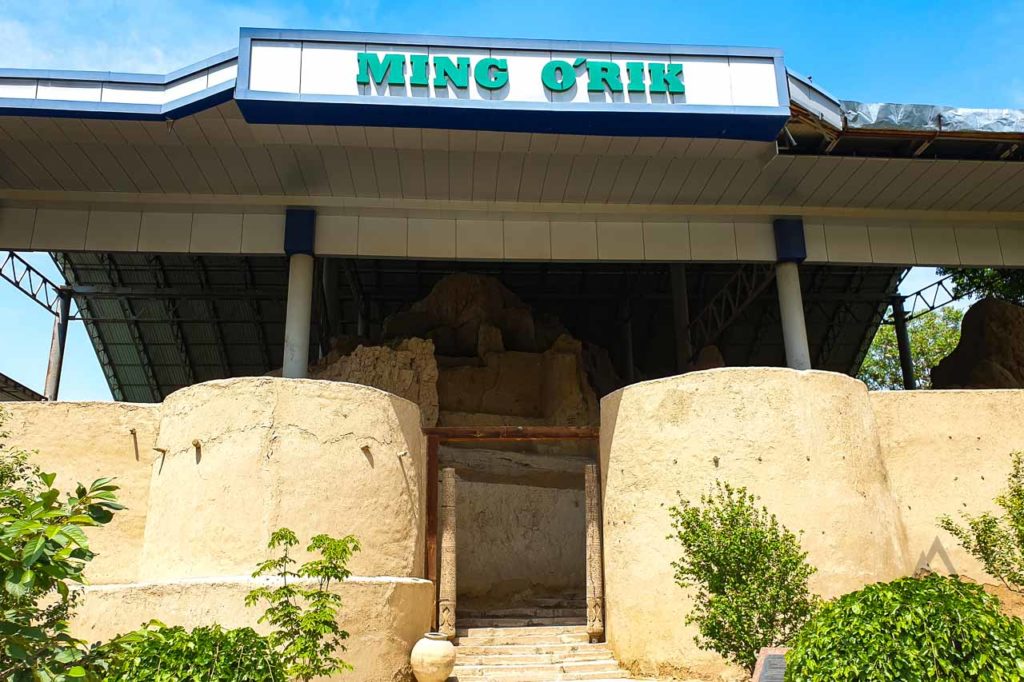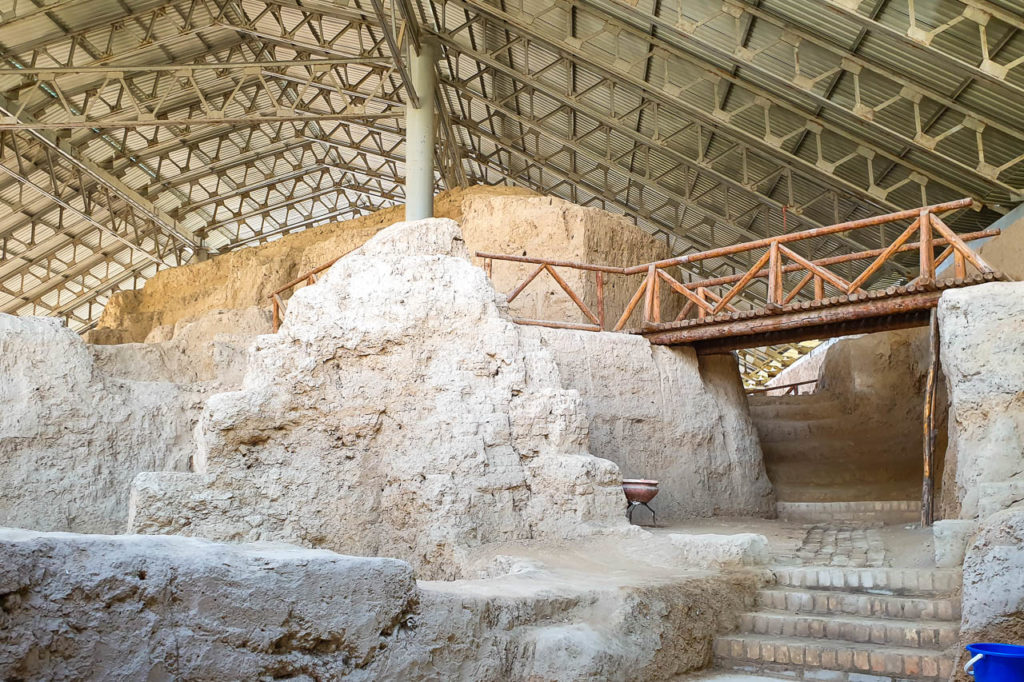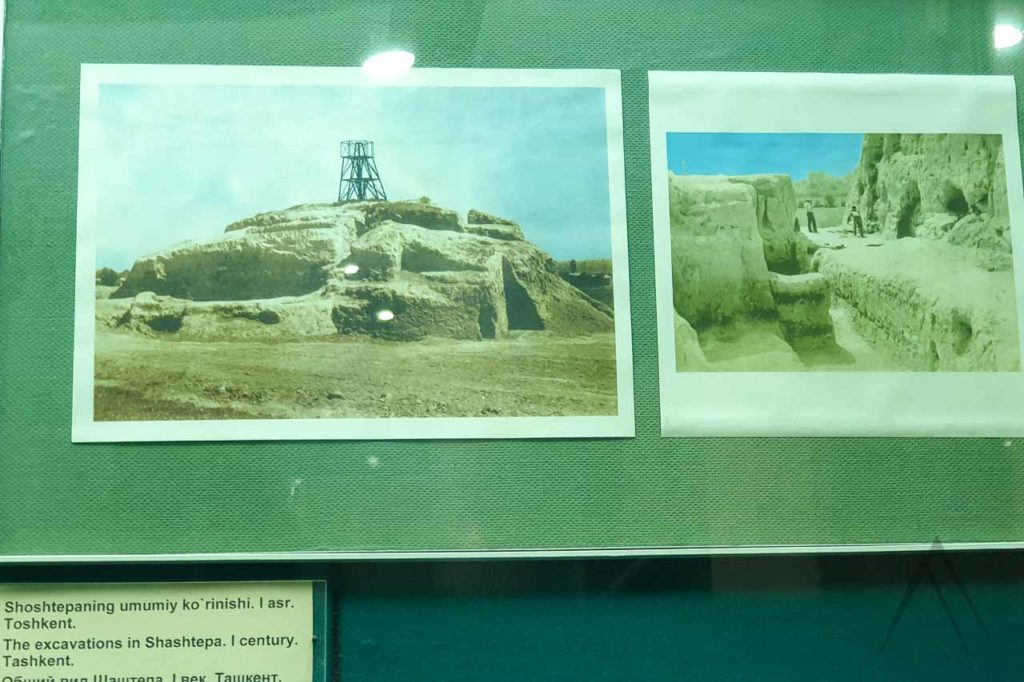TASHKENT ANCIENT SETTLEMENTS
Ancient Settlements around Tashkent
Tashkent area along the Chirchiq river has been inhabited already for a long time and those civilizations have left some ruins from different times nearby the modern day Tashkent. The ruins are quite often in bad shape but offer a lot for the fans of history and fortresses.
Ming Urik
The museum of the ancient settlement “Ming Urik” (or Ming Orik) is one of the most remarkable ancient objects of Tashkent from the era of Zoroastrianism. All that is left of the Ming Urik settlement, is now in a museum which is at the same time an archaeological site preserved by the Uzbekistan state. The Ming Urik settlement, with an area of 35 hectares, is located inside Tashkent, near the Northern Railway Station, next to the Salar Canal. It got its name from a large garden of apricot trees laid out on its territory. The name translates as “thousand apricots” from Uzbek language. It is assumed that this site was once the capital city of the ancient khaganate called Kangyui and that it existed until the 4th century AD. After the collapse of the Kangyui state, this region turned into an independent state.
During its time Ming Urik was densely populated flourishing city with its high walls, great architecture, urban life and craftsmen. There was also a fortress citadel in the city, which served as protection during attacks. Some of the strongest buildings have survived to this day and can be seen at the site. According to Arab historians, there was a richly decorated palace in the city with a sacred fire always burning inside in it. It was an important symbol of Zoroastrianism that was the dominant religion in the area until the 10th century AD, when Zoroastrianism was gradually replaced by Islam.


Aktepa Yunusabad
Aktepa settlement is one of the oldest settlements and archaeological monuments of the great Tashkent oasis built in the 5th century AD and It protected Tashkent against invasions from the north up to the 8th century AD. The significance of the Aktepa settlement comes from its splendor and majestic castle that was once lying on this territory. Aktepa settlement is situated in the Yunusabad district of Tashkent city near the Aktepa canal, north from the Tashkent Zoo. Today the clay made hill fort rises to the height of 21 meters and you can easily see the modern Tashkent city from there. There are also some remains of a castle, palace, and temple with an ever-burning holy fire as a symbol of the Zoroastrian religion.
According to experts, it was summer residence of one of the rulers of that time and served as a strong defensive fortress. The building has a unique structure since it was built on a hill and surrounded by an extended deep channel. The only object connecting the castle with the land was a bridge, protected by a specially designed narrow bypass gallery, allowing only one person to pass it at the time making it easy to repel an attack at it.
Another significant defensive object in Aktepa was a massive inner tower of a medieval castle serving as an observation tower, from which the ruler was monitored around the clock and guarded. The defense of this building was therefore excellent, with smallest details thought. All this tells of the high development of urban planning and architecture in the ancient settlement of Aktepa.
Shashtepa Hillfort
The ancient settlement of Shashtepa (or Chastepe) is the earliest known spot of settlement and archaeological site in the territory of modern Tashkent. It was a round shaped guarded fortress that protected residents from attacks from the south and it is located south from Tashkent center, near the junction of the Tashkent ring road and the Jun canal. A small part of old Yangiyul road, from 54th passage to the bridge crossing the Jun channel has been named Chashtepe according to it and it passes just south of the site. The open area for excavation is only 25 hectares as modern buildings have reduced its area.
The first settlements in this area belong to the Burguluk culture. The first settlements of this culture started here in the 9th-7th centuries BC – in the Bronze Age – along the middle course of the Akhangaran River.

In the 3rd century BC, nomads appeared on this territory, but from the traces of their stay, only necropolises have survived. Their graves were oftern dug right into the abandoned dugouts of the Burguluks. The graves were square pits up to two meters long, where the dead lay on reed mats. According to the artifacts found, it is assumed that the tribes that left the corpses, came here from the Urals and the Volga regions, where the Sarmatians lived at the time.
Other sights near Tashkent
Page updated 1.7.2021